AudioCulture
The noisy library of New Zealand music
Te pātaka korihi o ngā puoro o Aotearoa
Mike Rudd
Although best known across the ditch for his iconic 1970s hit ‘I’ll Be Gone’, Rudd’s unique voice, songwriting and humour has been responsible for some brilliant music over many genres and years.
In 1966, Rudd arrived in Melbourne with Chants R&B. The band left Christchurch when they released their second of only two singles, the classic cover of ‘I’m Your Witchdoctor’. The move to Australia wasn’t a small one for a band that had barely moved beyond their home town.
“It was a big move,” says Rudd, “particularly as the band had been in residence at the Stage Door for two years without venturing out, save for the trip up to Wellington to record at HMV.”
In Melbourne, original members Rudd (rhythm guitar) and Trevor Courtney (drums) were joined by Neil Young (bass) and reunited with Matt Croke (lead guitar). Croke was an Australian who had had played with the band in Christchurch before being removed by authorities for overstaying on an air force apprenticeship. The band played shows in the city, but by this time the original members were moving in different directions.
“We identified pretty much with the scene in Melbourne,” says Rudd, “there were bands on the same path, like Wild Cherries for instance. What we found difficult to cope with was our musical eclecticism – blues alongside soul alongside The Pretty Things – was a little confusing to sell in the open market and that sowed the seeds of division, particularly between Trev and me. The split therefore was a genuine case of musical differences.”
Although Tinsley Waterhouse replaced Courtney when he left to join Cam-Pact, they disbanded not long after they arrived in Australia. Soon after Chants R&B broke up, Rudd met up with singer-songwriter Ross Wilson and guitarist Ross Hannaford. Switching to bass, Rudd joined Wilson and Hannaford and Peter Curtin (drums) in The Party Machine in 1967.
In early 1969, the self-published The Party Machine Songbook was seized by the Victorian Police, who considered some of the lyrics "unwholesome".
Although a number of songs were recorded, they only released one excellent single, ‘You’ve All Got To Go’ backed with ’Gentle Art’, in 1969. The band’s greatest moment of notoriety had little to do with their music. In early 1969, the self-published The Party Machine Songbook was seized by the Victorian Police, who considered some of the lyrics "unwholesome". Lasting a couple of years, the band effectively called it a day soon after Wilson was recruited by progressive UK-based rock band Procession. The experience in The Party Machine inspired Rudd to form his own band:
“When Ross left for the UK I believed the band, and Ross in particular, was onto something and I was determined to put a band together based around my songs – although I’d got none written at that stage.”
Rudd later joined forces and stages with Wilson and Hannaford again in the even shorter lived but beautifully named Sons Of The Vegetal Mother, but by this time he had formed Spectrum.
“I was keen to have a Hammond/Leslie player in the band, and hooked up with David Skewes and drummer prodigy Mark Kennedy,” he says. “Bill Putt was the guitarist in Mark’s band and I decided to swap my bass for guitar duties and Bill became the bassist. David lost interest and we found Lee Neale, who at that stage played a Farfisa organ, the last keyboard on my wish list, but we eventually got round to a Hammond.”
Although both Neale and Kennedy were brilliant musicians who would add much to the early sound of the band, neither Rudd nor Putt could have imagined in the early 1970s that their musical partnership would last more than 40 years. The band’s first year was spent writing material and playing regularly around Melbourne. At the time their shows, like their music, were becoming increasingly elaborate. Because the economics of these shows didn’t always work, Rudd re-christened the band as a more pared down unit and they were able to play on the increasingly popular pub circuit.
"We’d gotten used to playing long, involved pieces of music to serious hippies and stylists who’d often sit on the floor to listen to us and that simply wouldn’t work in a pub."
– Mike Rudd
Rudd: “When Spectrum started playing, the pub scene was virtually non-existent and we played at a number of small clubs in Melbourne – the Thumpin’ Tum, Berties and Sebastians for example, that strangely characterised themselves as Discotheques, as well as the occasional TF Much Ballroom. When pubs became the principal source of employment, Spectrum had a dilemma. We’d gotten used to playing long, involved pieces of music to serious hippies and stylists who’d often sit on the floor to listen to us and that simply wouldn’t work in a pub. So I invented ‘The Indelible Murtceps’, who used more portable gear and played a new repertoire of easily assimilated dance tunes. I reserved the right to remain a weirdo lyrically.”
Although the personnel were the same and they never became the “dance band” Rudd was hoping for, the Murtceps would continue their own distinct identity alongside and often playing with Spectrum.
Signed to EMI, Spectrum’s first release was ‘I’ll Be Gone’, a deceptively simple song highlighting Rudd’s distinctive voice and harmonica. It reached No.1 in Australia in 1971, becoming one of the most popular Australian songs of the 1970s. But it was an anomaly of sorts as it didn’t reflect the more progressive sound of the band and unfortunately its commercial success wasn’t to be repeated. Also in 1971, the band released their debut album, Spectrum Part One. The recording was completed relatively quickly and reflected the development of the band since the first single was released.
“I think the album was recorded pretty efficiently, but there was no pressure and we got on famously with both Howard Gable, the producer and John Sayers, the engineer. We were stretching for material and I wrote ‘Drifting’ while we were recording the album. There was a six month hiatus between recording the single and it being released and by that time I thought the band had moved on and deemed it inappropriate to be included on the album. I think I was right musically speaking, but of course it was suicide marketing-wise.”
Comprising songs from their live shows, the album is bookended by connections from Rudd’s Party Machine days, with ‘Make Your Stash’, a Ross Wilson song, kicking the album off and ‘Mumbles I Wonder Why’, co-written with Ross Hannaford, bringing things to a close. Rudd’s songs hold the album together alongside some wonderful playing by Neale and Kennedy, especially on ‘Fiddling Fool’ and ‘Superbody’. Kennedy left the band shortly after the album was recorded and was replaced by Ray Arnott. Ending a busy year, the band would release another single in 1971, Arnott’s ‘Trust Me’.
In 1972, Spectrum released their second album and sprawling masterpiece, Milesago.
In 1972, Spectrum released their second album and sprawling masterpiece, Milesago. Using the same recording team the band enjoyed making it more than the first album:
“Once we realised we had more than the one album we started exploiting instruments around the studio (eg timpani) to come up with new tunes – and they did get a bit silly. But overall it hung together okay and we were all pretty happy with it.”
As a mammoth double album, it has everything from the pure pop of ‘But That’s Alright’ to the drawn out ‘Sideways Saga’, alongside ridiculously titled epics like ‘What The World Needs (Is A New Pair Of Socks)’ and ‘Fly Without Its Wings’.
At the time, the band (as both Spectrum and the Murtceps) was playing regularly. They performed at the first Sunbury Festival in 1972 alongside The La De Da’s, Max Merritt, Tamam Shud, Billy Thorpe and the Aztecs, Wild Cherries and many more. Both bands would play Sunbury again a year later. There were also regular TV performances on shows like GTK, and the Murtceps appeared in Peter Weir’s short film Three Directions in Australian Pop Music in 1972, playing live at the TF Much Ballroom in Melbourne.
Later in 1972, the Murtceps released their first single, ‘Esmeralda’. It was included on their first album Warts Up Your Nose, released in 1973. With the album’s title track and most songs credited to “My Crudd” the piss-taking intent was undeniable, but with classics like ‘We Are Indelible’, ‘Blue Movies Make Me Cry’ and ‘Some Good Advice’, the album is enjoyable throughout. Neale would leave the band soon after the album was recorded. He was replaced by John Mills.
A third Spectrum album (confusingly it was also credited to the Murtceps) Testimonial was released in 1973. Not as widely appreciated as the first two albums, it has an almost subdued feel, with Arnott wanting out of the band by this stage and Rudd able to see the writing on the wall. But the band’s playing is still great and there are still some excellent songs, especially ‘I Think I Even Missed The Station’, ‘Real Meanie’, ‘Essay In Paranoia’ and ‘Homesick Valium Blues’. The band eventually called it a day when Arnott left to join Ross Wilson’s new band Mighty Kong. Spectrum and the Murtceps played one last show in April 1973 at the Dallas Brooks Hall in Melbourne. It was recorded and released later in the year as their excellent and final album, Terminal Buzz, underscoring what great live “bands” they were.
After Spectrum’s demise, Rudd, Putt and Mills moved on quickly to form Ariel in 1973. Rudd wanted as big a contrast with Spectrum as possible. The initial line-up of the band included Tim Gaze (guitar), and Nigel Macara (drums), who had both been in Tamam Shud. More art rock than progressive, the band provided a vehicle for Rudd’s songwriting for the rest of the 1970s, and could have potentially reached wider commercial success with more stability in the line-up. But things started very well with the band’s first single released on EMI, ‘Jamaican Farewell’, reaching No.34 in the charts and getting some airplay in the UK thanks to John Peel. Also in 1973, Ariel supported Gary Glitter’s tour of Australia.
In 1974, Ariel released their first album, A Strange Fantastic Dream:
“With Tim and Nigel’s arrival there was an unbelievable injection of youth and energy and I basically wrote the whole album in the space of a month or so. The songs are the requisite Rudd bitter and twisted pieces but perhaps more so – and what Tim in particular brought to the songs with his musical ability and blinding technique was more than I could’ve hoped for. I think the interplay between John and Tim on the album is mind-blowing.”
With record company backing, the band was invited to record their follow-up at Abbey Road Studios in London.
Aptly titled, the album is a wild and hallucinating ride, every bit as strange and wonderful as Milesago. The band sounds fantastic but Rudd’s ever-present storytelling and humour is the real highlight, especially on ‘Confessions Of A Psychopathic Cowpoke’, ‘Garden Of The Frenzied Cortinas’, ‘Chicken Shit’ and ‘Hard Way To Go’. With record company backing, the band was invited to record their follow-up at Abbey Road Studios in London. Unfortunately, after a year, cracks in the band were surfacing until they reached a head:
“It was the train trip to Western Australia and back that killed any hope we could survive as a band,” says Rudd. “It could be made into a horror movie one day.”
By April 1974, Mills, Macara and Gaze had quit the band. With the band in disarray, Rudd began work on a rock opera called Jellabad Mutant:
“When the band imploded I was pretty low and had no plans to get another band together. My wife and I holidayed on the Mornington Peninsula and it was there an idea formulated for a rock opera – in fact, a sci-fi rock opera. I put down the music on my tape recorder and eventually brought it to Bill’s attention – and another band was put together around this music.”
By this time the Ariel line-up included guitarist Harvey James and drummer John Lee, and the band released a second and even better single, ‘Yeah Tonight’. Soon after, Ariel left Australia to record what would be their second album in the UK at the end of 1974. But EMI wasn’t interested in releasing Rudd’s rock opera and the band found themselves in Abbey Road Studios with “bugger-all to record”.
The resulting album, Rock And Roll Scars, was released in 1975. The lack of preparation for the recording shows up in the relatively few new songs presented on the album, which draws significantly on older Spectrum/Murtceps material. But it’s a surprisingly coherent and uniformly excellent album. The newer, more rocking versions of ‘Launching Place’, ‘Some Good Advice’, ‘Real Meanie’ and ‘I’ll Be Gone’ bring life into older songs which fit seamlessly alongside highlights like ‘Red Hot Momma’ and ‘I Am The Laughing Man’. Another single, ‘I’ll Take You High’ was released with an expanded line-up featuring New Zealander Glyn Mason (guitar and vocals) who joined the band soon after they arrived back from the UK in early 1975. A year later the band returned to the UK and in the process lost Lee, who was replaced for a short period by Macara for his second stint in the band. Soon after James also moved on, to be replaced by Tony Slavich (keyboards).
In 1976, Ariel released its third and final studio album, Goodnight Fiona. Mason and others share songwriting duties across the album and although this may have led to a lack of direction in parts overall, it’s an accomplished effort. Another good single, ‘I Can Do Anything’ was taken from the album. But by the end of 1976 there would be more changes to the line-up with Macara leaving the band for a final time, to be replaced by Iain McLennan. Ariel would release another excellent single, ‘Disco Dilemma’, in 1977 before calling time. Their final show was in August 1977 at the Dallas Brooks Hall in Melbourne. Like Spectrum/Murtceps before them, the show was recorded and released over two albums, Aloha Ariel and Live – More From Before, and eventually reissued as a double album.
After Ariel broke up, Rudd moved briefly into promotion and production for a time before forming a number of bands during the 1980s.
After Ariel broke up, Rudd moved briefly into promotion and production for a time before forming a number of bands during the 1980s. Although none were particularly popular or long lasting, all were striving for wider appeal, but were eventually lost in a haze of shoulder pads, pant suits and embarrassing music clips. Following a brief period as Mike Rudd and the Instant Replay in the late 1970s, Rudd changed the name of the band to Mike Rudd and the Heaters at the end of 1979. By 1980 the Heaters included Rudd and Putt alongside Tony Fossey on keyboards and Robert Dillon on drums. The band’s first release was the single, ‘Australian Girl’. Lightweight pop very much of its time, the single set the tone for future releases. The band’s next single, ‘I’m An Animal’, released in 1981, was better, but like their first it failed to make any dent in the charts.
A year later in 1982, the Heaters released their one and only album, The Unrealist, on Mushroom Records. The release of the album coincided with the Mushroom Evolution concert, celebrating the company’s 10th anniversary. The Heaters would play at the Sidney Myer Music Bowl in Melbourne to 40,000 people alongside The Swingers, Kevin Borich Express, Sunnyboys, Paul Kelly, Models, Madder Lake and many others. Although two further singles were released from the album it was at best a mixed affair and lacked the band’s obvious live strengths. More problematic at the time, it simply failed to register with the listening public. The band broke up soon after the album’s release.
Rudd next formed a shorter-lived trio with Putt and John Moon called W.H.Y. (the ‘WH’ standing for Weird Harold, their drum machine). The concept of the band was to marry video and live performance to sound like a TV station. Although not always a successful marriage, W.H.Y. was picked up by Klaus Schulze’s label Innovative Communication and flew to West Germany to record. An album, Present Tense, was released in 1983 but only in Europe. Taken from the album, ‘Women Of Steel’ was released as a 12-inch single in Australia in the same year.
But by this time, Rudd had moved on again with Putt to front a reunited Spectrum with Ray Arnott for a national tour supporting the release of a compilation, ‘Red Orange Yellow Green Blue Indigo Violet’. The band also appeared on an ABC TV concert special on Rock Arena in 1984. After the Spectrum shows, Rudd and Putt took a step back from performing regularly until 1989 when they appeared on Paul Hester’s TV show Hessie’s Shed. This was followed by Spectrum playing shows again in 1989 and 1990.
In 1991, Raven Records released a Spectrum/Murtceps compilation, Ghosts: Post-Terminal Reflections. The compilation supported more regular shows by Rudd and Putt as Spectrum during the 1990s that more importantly, led to new material. By the mid-1990s, both Spectrum and Ariel would occasional play shows in Melbourne. Around the same time and ending a 12-year gap in new recordings, Rudd and Putt released the very laid back and largely acoustic album Living On A Volcano on their own label Volcano Records in 1995. Somewhat of a return to their roots Spectrum Plays The Blues, featuring Rudd and Putt alongside drummer Peter Robertson, also released two albums of blues standards in 1999 and 2004.
In more recent times, Rudd seems as active as ever balancing revisiting his past with writing new material.
In more recent times, Rudd seems as active as ever balancing revisiting his past with writing new material. In 2002, he reissued the first two Ariel albums and released the aborted rock opera The Jellabad Mutant for the first time. In 2007, Chants R&B reformed to play in New Zealand for the first time in 40 years. The band played again in 2010. This was followed by a documentary about the band, Rumble and Bang, in 2011. Reissue specialists Aztec Music released Spectrum Part One in 2007 and Milesago in 2008. At the same time Spectrum released the first of three Breathing Space EPs, which included revisits to older material alongside newer songs. The formula was followed on the next two released in 2009 and 2011. Refreshingly, it’s the newer material from these releases that provide the highlights especially on ‘Star Crazy’, ‘Xavier Rudd Is Not My Son’, and ‘Soul Man’. In 2009 Rudd performed ‘I’ll Be Gone’ on ABC’s TV show Rockwiz, in excellent voice.
Sadly, Bill Putt passed away in August 2013. A brilliant musician, Putt has been an integral part of Rudd’s music for over 40 years. With plans to complete the blues album that was recorded before Bill passed away and spend more time in the studio completing “ideas collecting dust” it’ll be interesting to see how the next 40 years of Rudd’s music evolves.
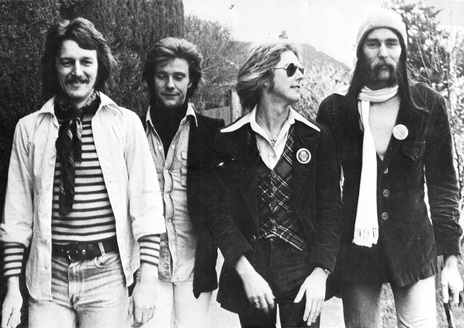
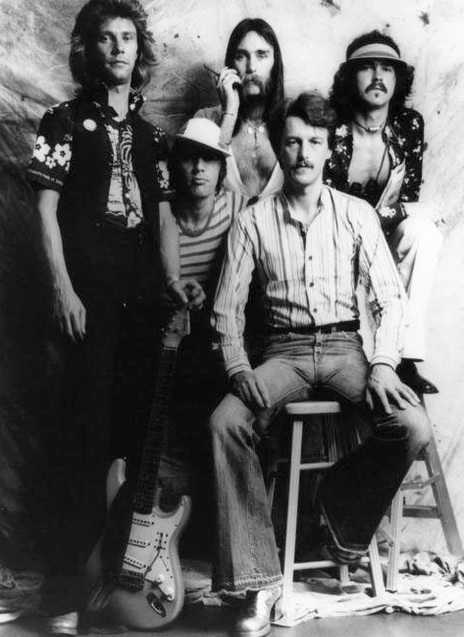
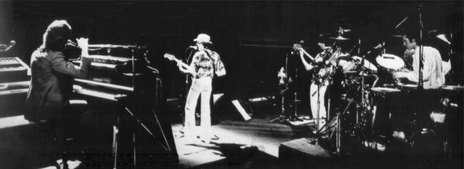
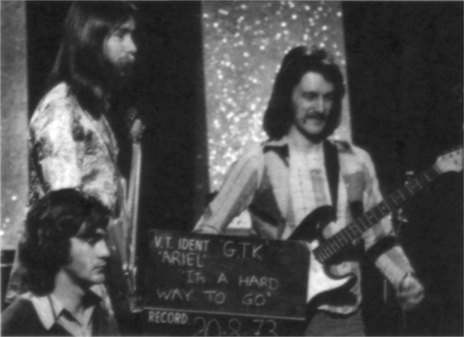
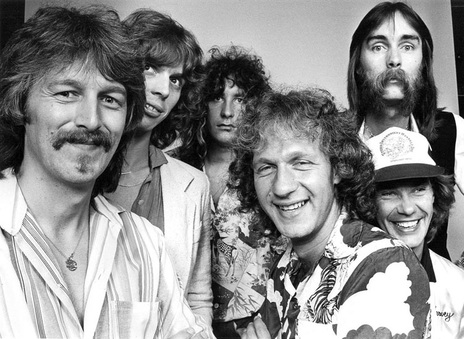
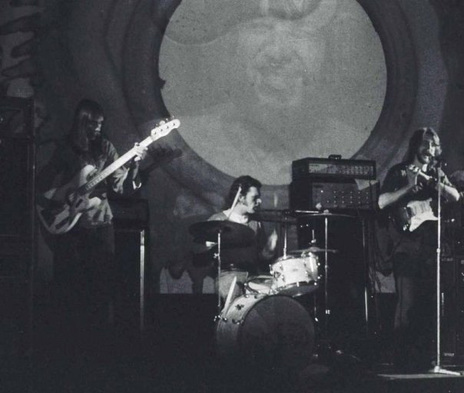
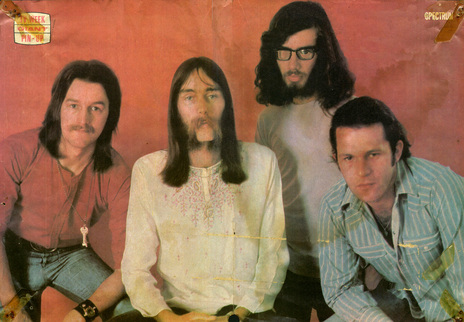
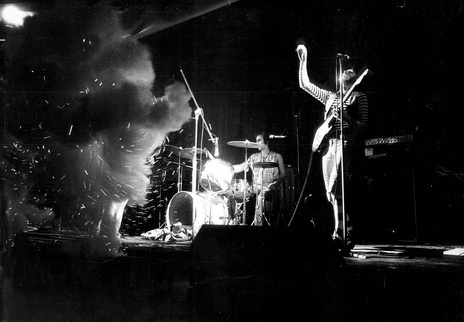
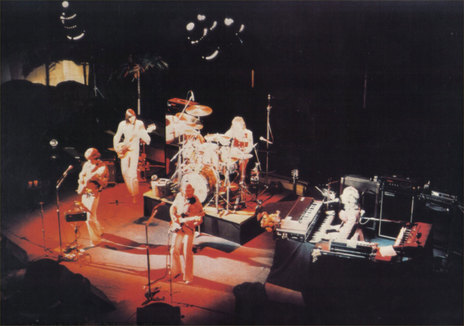
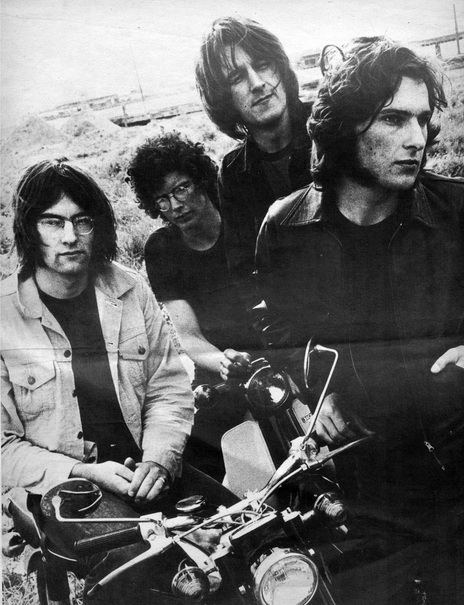
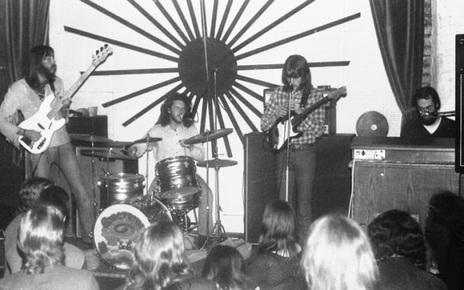
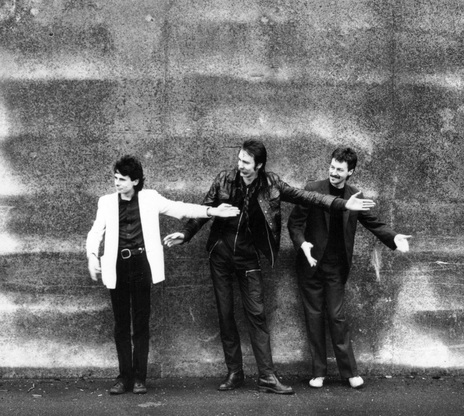
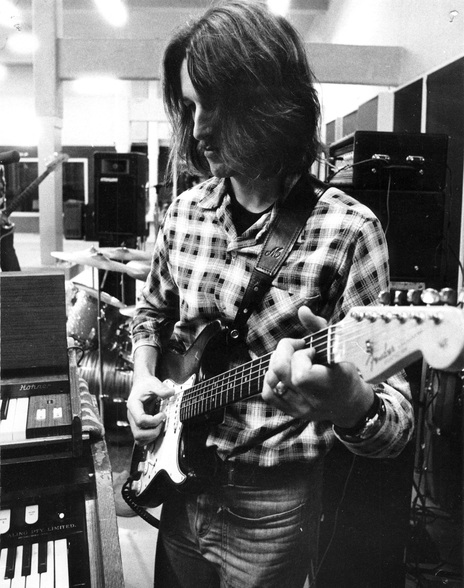
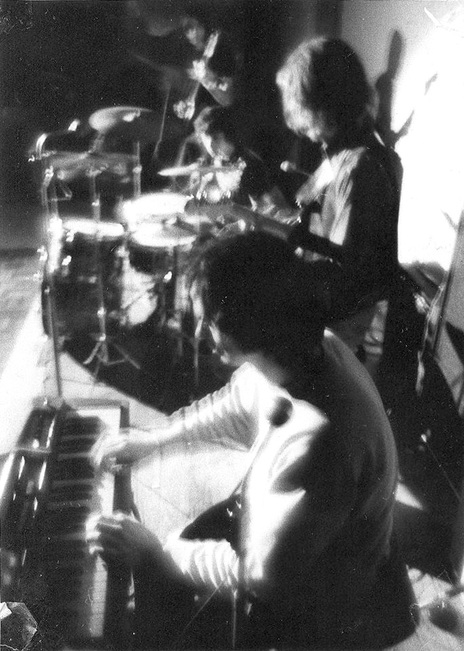
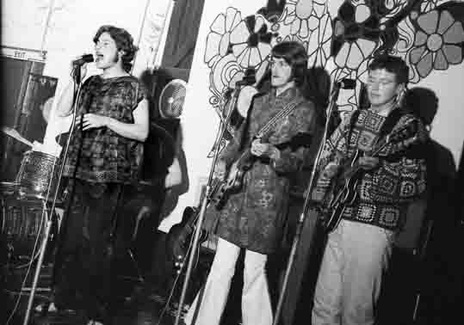
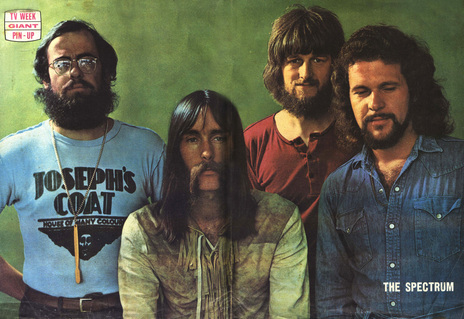
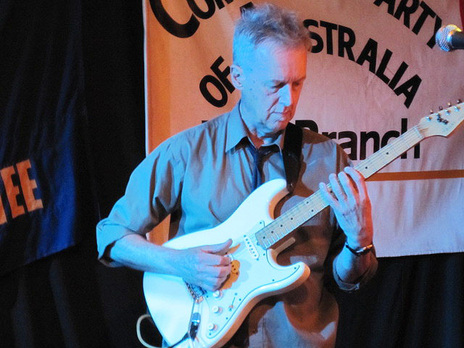
Mushroom Records
Harvest
EMI
CBS
Image
Innovative Communication
In May 2001, the Australasian Performing Right Association (APRA), as part of its 75th Anniversary celebrations, named 'I'll Be Gone' as one of the Top 30 Australian songs of all time.
Also in 2001, music by Spectrum and the Indelible Murtceps was covered for a "soundtrack" to Tim Winton’s book Dirt Music.
Released in 1972, Spectrum’s Milesago is recognised as one of the first double-rock albums ever released in Australia.
Visit our sister site
NZ On ScreenMade with funding from
NZ On Air

